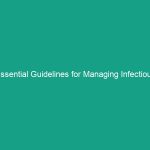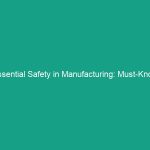Good Morning Team!
Today, we will discuss an essential topic that is crucial for our workplace: Essential Task Planning Guidelines to Enhance Workplace Safety & Efficiency. It’s vital we understand how proper planning can not only keep us safe but also improve our overall efficiency in the workplace. Safety is not just a priority; it’s a core value that impacts us all daily.
Understanding Essential Task Planning Guidelines
Essential Task Planning Guidelines refer to a structured approach to preparing and organizing tasks to minimize Hazards and maximize efficiency. These guidelines focus on identifying potential risks before they become issues, ensuring that every employee knows the correct Procedures to follow. Misunderstanding or neglecting these guidelines can lead to accidents, injuries, and even fatalities, impacting not just the individual but the entire team.
Key Hazards, Risks, and Safety Considerations
When we talk about task planning, it’s important to recognize the specific hazards that can arise in our daily operations. Here are some key risks associated with inadequate task planning:
- Lack of Communication: Failing to communicate plans effectively can lead to confusion and errors.
- Inadequate Resources: Not having the right tools or materials on hand can lead to unsafe shortcuts.
- Environmental Hazards: Overlooking workplace conditions, such as spills or obstructions, can create dangerous environments.
- Insufficient Training: Without proper training, employees may not recognize hazards or know how to mitigate them.
Ignoring these risks can result in severe consequences, including injuries, lost workdays, and increased insurance costs. Therefore, it is vital to prioritize Safety in our planning processes.
Best Practices, Procedures, & Actionable Advice
Now that we understand the risks, let’s explore some Best Practices that can enhance our task planning:
1. Conduct a Risk Assessment
Before starting any task, take the time to conduct a thorough risk assessment. Identify potential hazards and evaluate their impact. Consider using a checklist to ensure nothing is overlooked.
2. Develop a Task Plan
Once risks are identified, develop a detailed task plan that outlines:
- The objectives of the task
- The steps involved, including Safety Measures
- The resources required
- The personnel responsible for each step
3. Communicate the Plan
Effective communication is key. Hold a pre-task briefing to discuss the plan with all involved. Encourage questions to ensure everyone understands their role and the safety protocols in place.
4. Monitor and Adjust
During the task, monitor progress and be prepared to adjust the plan as necessary. If new hazards arise, address them immediately to maintain safety.
5. Review and Learn
After the task is completed, conduct a review to discuss what went well and what could be improved. This creates a culture of continuous improvement and learning.
Case Study: A Real-World Example
Consider a recent incident in our industry where a lack of planning led to a serious injury. An employee was assigned to work on a high ladder without the proper Safety Measures in place. Due to poor planning and communication, the worker fell and sustained injuries. This incident highlights the importance of following essential task planning guidelines to ensure safety and prevent accidents.
Regulations, Standards, and Compliance
Compliance with safety Standards is not just a legal requirement; it’s essential for protecting our workforce. Relevant standards, such as those set by OSHA (Occupational Safety and Health Administration), outline the responsibilities of employers and employees in maintaining a safe workplace. Ensure you are familiar with these Regulations and how they apply to your tasks.
Failure to comply with safety regulations can result in fines, increased insurance premiums, and, most importantly, jeopardized employee safety.
Employee Engagement & Discussion
Now that we’ve covered the essential guidelines, let’s engage in a discussion. Here are a few questions to consider:
- What safety challenges have you encountered in your tasks?
- How do you think we can improve our task planning process?
- Can you share a time when proper planning made a difference in your work?
Feel free to share your thoughts and experiences. Your input is invaluable and can help us create a safer work Environment.
Conclusion & Key Takeaways
To wrap up, remember that Essential Task Planning Guidelines are critical for ensuring our safety and efficiency at work. By conducting thorough risk assessments, developing clear task plans, communicating effectively, and continually reviewing our processes, we can enhance our Workplace Safety culture.
Let’s prioritize these practices in our daily operations and continue to support each other in maintaining a safe working environment. Thank you all for your attention and your commitment to safety. Together, we can make a difference!


